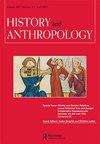挖泥船的
IF 0.4
2区 历史学
Q3 ANTHROPOLOGY
引用次数: 0
摘要
通航航道的疏浚是全球贸易的一个关键但往往被忽视的先决条件。这篇短文以“挖泥船”这个人物为中心,将现代海运业、殖民扩张和地心说人类学思想联系起来。挖泥船指的是挖掘水下沉积物的机器或从事这项工作的人。我认为挖泥船的形象有助于理解人类的集体地质能动性。本文章由计算机程序翻译,如有差异,请以英文原文为准。
The dredger
ABSTRACT The dredging of navigable waterways is a critical but often overlooked precondition for global trade. Focusing on the figure of “the dredger”—which can refer to a machine that excavates underwater sediment or a person who does that work—this short article links the modern maritime industry, colonial expansion, and terracentric anthropological thought. I argue that the figure of the dredger is useful for understanding the collective geological agency of humanity.
求助全文
通过发布文献求助,成功后即可免费获取论文全文。
去求助
来源期刊

History and Anthropology
Multiple-
CiteScore
1.80
自引率
0.00%
发文量
41
期刊介绍:
History and Anthropology continues to address the intersection of history and social sciences, focusing on the interchange between anthropologically-informed history, historically-informed anthropology and the history of ethnographic and anthropological representation. It is now widely perceived that the formerly dominant ahistorical perspectives within anthropology severely restricted interpretation and analysis. Much recent work has therefore been concerned with social change and colonial history and the traditional problems such as symbolism, have been rethought in historical terms. History and Anthropology publishes articles which develop these concerns, and is particularly interested in linking new substantive analyses with critical perspectives on anthropological discourse.
 求助内容:
求助内容: 应助结果提醒方式:
应助结果提醒方式:


